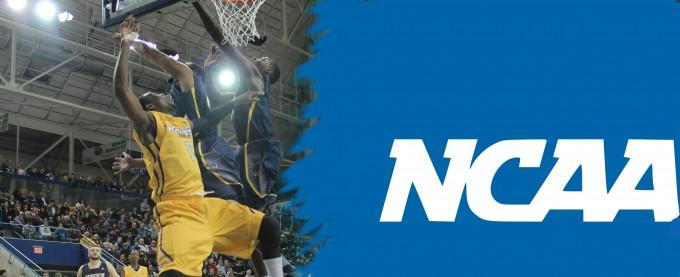By Tagwa Moyo and Devin Jones
Last spring the Canadian Interuniversity Sport (CIS) men’s basketball Final 8 tournament was hosted at Ryerson. The games took place at the Mattamy Athletic Centre in Toronto. There were approximately 3,500 fans in attendance at the game, with tickets costing between $18-$24, or free for students.
One month later the National Collegiate Athletic Association (NCAA) March Madness championship game was played at Lucas Oil Stadium in Indianapolis, which happens to be home of the Indianapolis Colts. For that game there were 80,000 people in the stadium and the game was televised on ESPN television. Tickets to attend this match up were $225 -$10,000.
But forget about money, because competing with its American counterparts is a conversation the CIS will lose every time. And for Ryerson athletic director Ivan Joseph, the CIS is about offering something different.
“We’re not here to compete with NCAA Division I football or basketball from a ticket sales and ad revenue generating standpoint,” Joseph said. “Where we do compete is from the student athlete experience. When you talk about the academic rigor at a Canadian university, you’re talking Harvard, you’re talking Duke, you’re talking Stanford.”
This academic rigor throughout the CIS culminated in 3,101 students achieving All-Canadian academic status in 2014-2015, including 15 athletes from Ryerson.
This notion of having to go to the United States in order to achieve an exemplary education while also competing at a high level of athletic excellence is something Joseph is looking to nullify.
“I’m not here to say that, ‘Hey we want to be like Notre Dame or Michigan in what we’re doing,’” Joseph said. “What we want to have is the best academic experience, and for the student who wants a significant athletic experience that’s year round and has great coaching, but doesn’t want to go to the States to get it, they can choose Ryerson.”
It doesn’t take a math genius to understand that there is a huge difference between CIS and NCAA in terms of funding. The question is, why are the numbers so staggeringly different?
In 2013-2014 the CIS provided just over $15 million in athletic scholarship money to student athletes, this number was an increase in nine and a half per cent from the previous season. The NCAA Division I and II schools on the other hand provide more than 2.7 billion dollars to its student athletes. One thing to be noted is that Division III schools do not offer athletic scholarships.
“CIS doesn’t have money in the recruiting and scholarship department. There is money available academically but not so much for sports,” said men’s basketball interim head coach Patrick Tatham. “The universities in Canada are focused on academics which is a pretty good idea.”
The main difference behind these statistics is that the NCAA offers full scholarships that pay for the athletes’ tuition, textbooks, residence and meal plans. The CIS on the other hand, does not provide athletes with full scholarships.
“Some CIS student athletes still have to apply for OSAP,” said Kareem Griffin, an assistant coach for the Ryerson women’s basketball team. “Student athletes can get work-study jobs but players sometimes can’t give us as much because they have jobs (and school).”
Essentially the lack of funding is built on systemically different models of education, the CIS shies away from full-ride scholarships from a philosophical and practical standpoint.
Despite the lack of funding, schools competing in the CIS still have plenty to offer. In terms of education, players competing in Ontario must maintain a 70 per cent average to remain eligible to play. This pushes athletes to maintain a higher academic standard.
Additionally, games are played differently in the CIS as opposed to the NCAA. “The CIS prepares for players to play overseas while the NCAA prepares its player to play in the NBA,” Tatham said.
Some of the main differences in CIS basketball is that timeouts cannot be called on the floor. Rather they have to come from the bench. But the CIS works under the 24-second shot clock unlike the NCAA which works under a 30-second shot clock. Tatham said that working under a 24-second shot clock forces coaches and players to make faster decisions in high-pressure situations.
In addition to the rules being different, athletes that come from NCAA school back to CIS have to adapt to the different style of competition. In a NCAA men’s basketball Division I program, players are generally larger than those that are playing in the CIS. Not only will players have to adapt to the rules they may also struggle to find methods of success against new opponents. But Tatham also said that he’s found players in the CIS to be more “consistent shooters,” overall.
NCAA sports in comparison to CIS sports are geared more towards preparing athletes for pro competition. That’s done by creating professional like atmospheres for games and providing stronger competition. Whereas CIS prepares its athletes for the workforce or playing in professional overseas competition through education.
Each has pros and cons, but when it comes down to it, as long as the student athletes garner a proper education first and a sports career second, there isn’t that much different between the two.










Leave a Reply